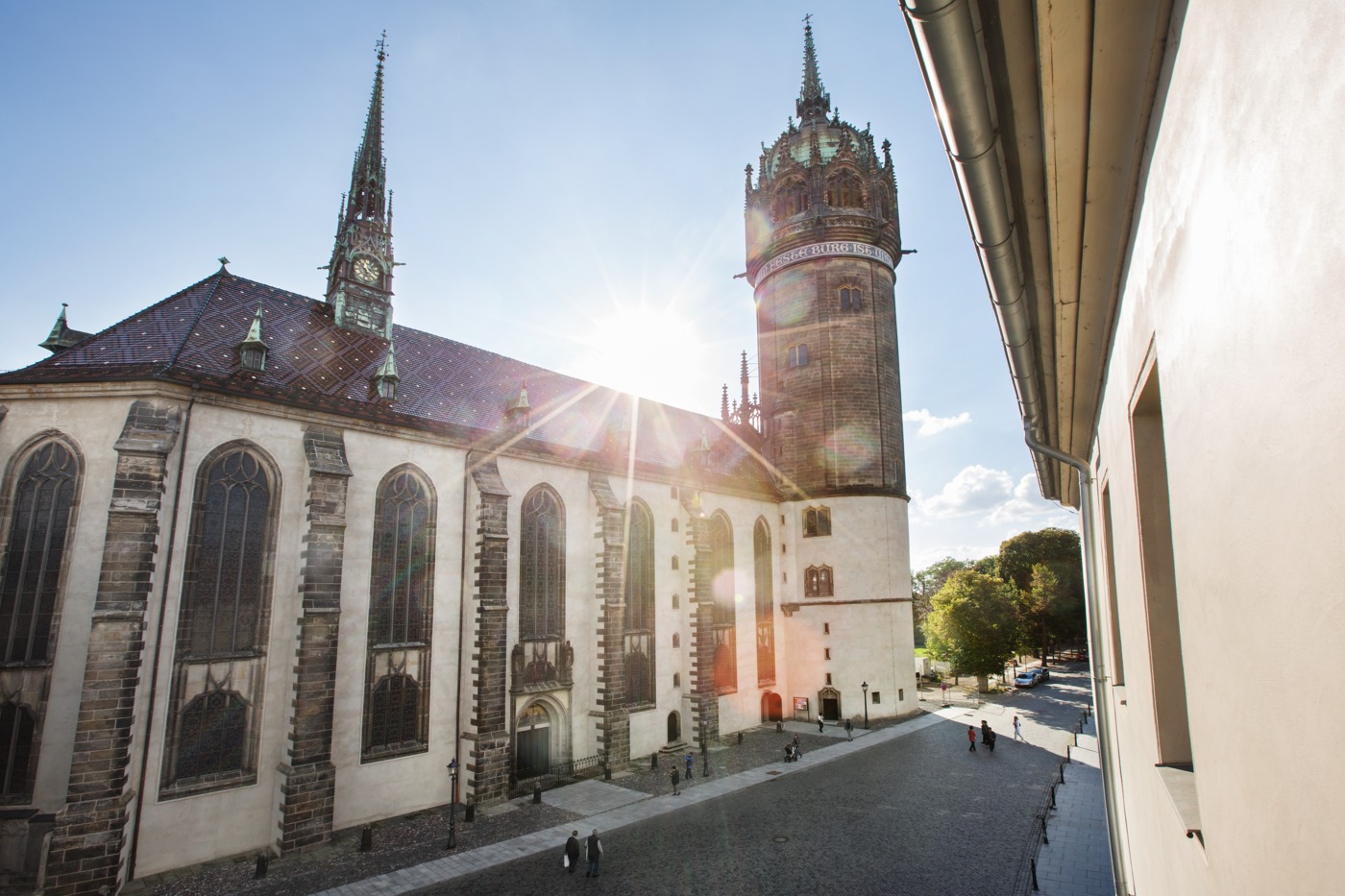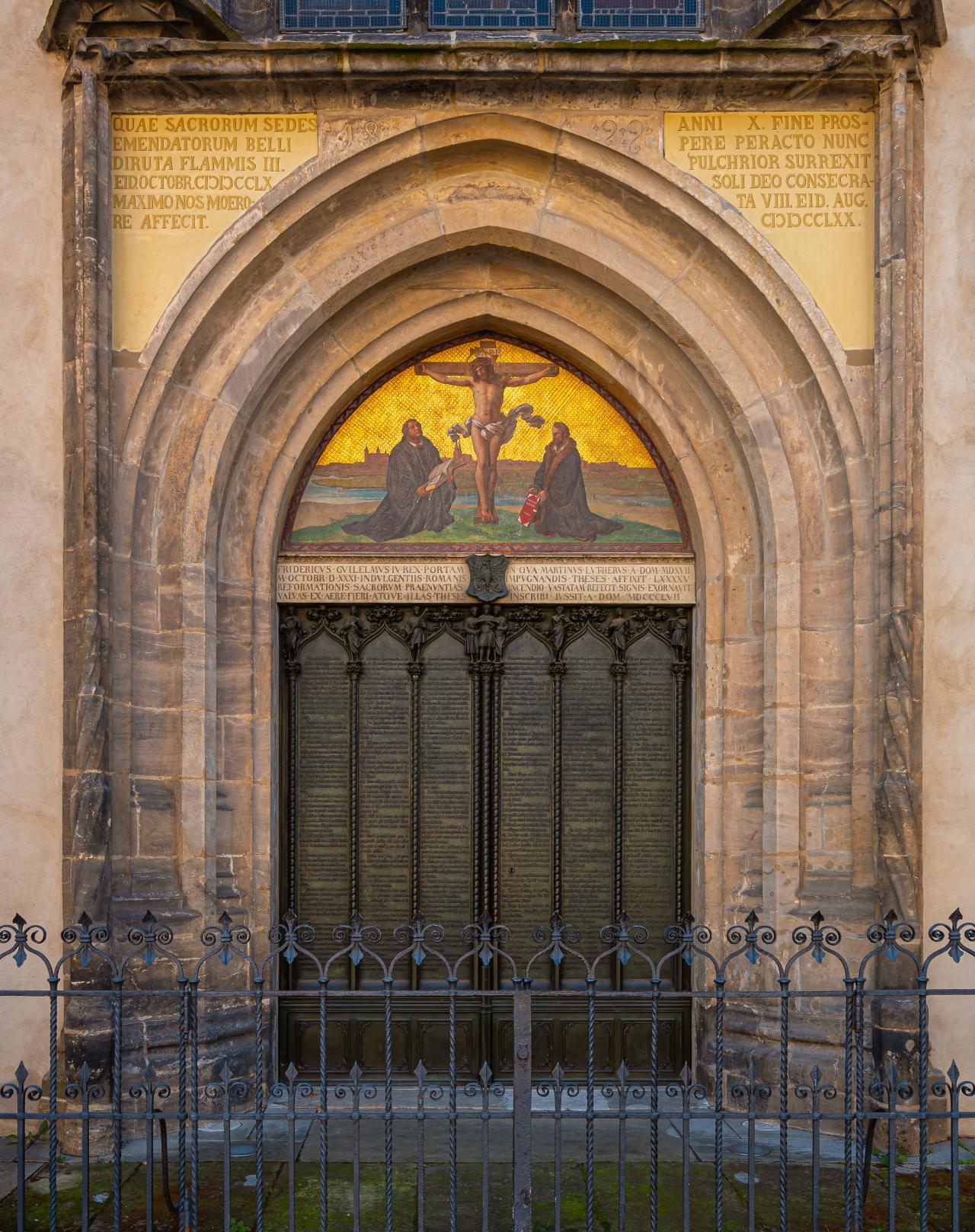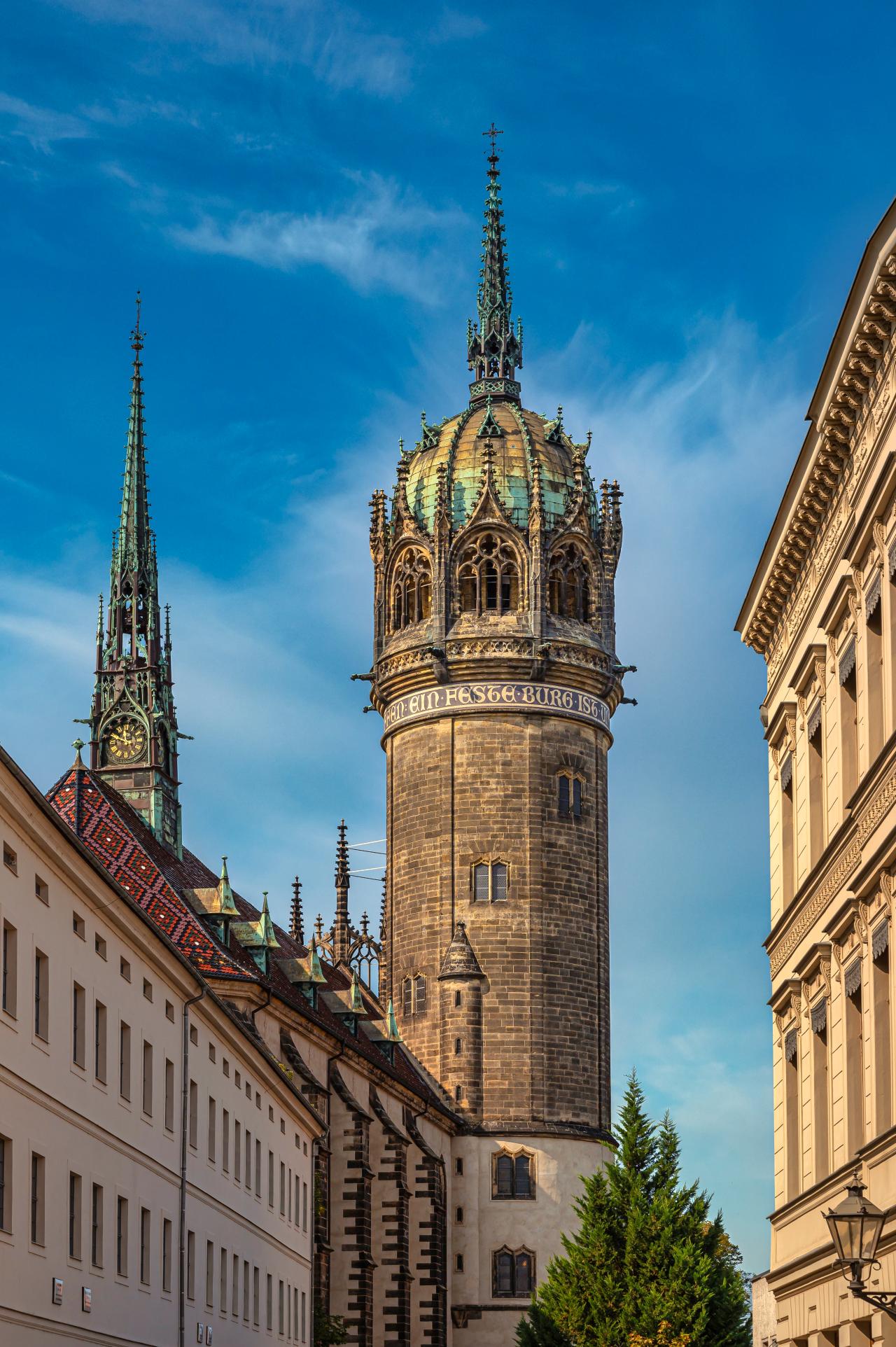
Castle Church Wittenberg
"Where the Reformation takes its beginning"
The castle church was built between 1489 and 1509 by the Elector Frederick the Wise. However, the castle church has its current significance mainly due to the posting of the theses by Martin Luther, who spoke out against the sale of indulgences with his 95 theses on the main portal of the church - which was still made of wood at the time. This is considered the beginning of the Reformation.
Around noon on October 31, 1517, the theology professor Martin Luther walks from the Black Monastery over to the castle church. In his hand he holds a parchment on which he has handwritten, in Latin, 95 theses against the abuse of the church's sale of indulgences. Luther slaps his pamphlet on the door of the main entrance of the castle church - the 95 theses flutter in the autumn wind alongside other announcements and messages. That is how tradition has it. One thing is certain: the 95 theses marked the beginning of the Reformation in Wittenberg.

Bronze theses door at the main portal of the castle church ©WelterbeRegion Anhalt-Dessau-Wittenberg, Uwe Weigel
Although historians now doubt whether this ‘posting of the Theses’ actually took place in the manner described, the door to the church remains inseparably associated with the Reformer and his drive to effect change. A bronze ‘Theses Door’ was installed in 1858 to commemorate his alleged act. The original door was lost during the Seven Years’ War. The Theses Door is located on the north side of the Castle Church.

Wittenberg Castle Church tower hood ©WelterbeRegion Anhalt-Dessau-Wittenberg, Uwe Weigel
Four days after Martin Luther’s death, he was laid to rest near the Castle Church’s pulpit. His coffin rests some 8 feet (2.4 metres) underground and is not accessible. Luther’s fellow campaigner Philipp Melanchthon, is buried in the church as well. Beneath the foyer lies the dynastic tomb of the Ascanian Electors.
On the neo-Gothic spire of the castle church, the words "Ein feste Burg ist unser Gott, ein gute Wehr und Waffen" can be read on a banner.
Headerpicture: ©WelterbeRegion Anhalt-Dessau-Wittenberg, Uwe Weigel
Information for Guests
Information of the Museum
Information of Architecture
In the mountain
Mobility Offers
Offers and service
Area
Congress facilitys
Distances






